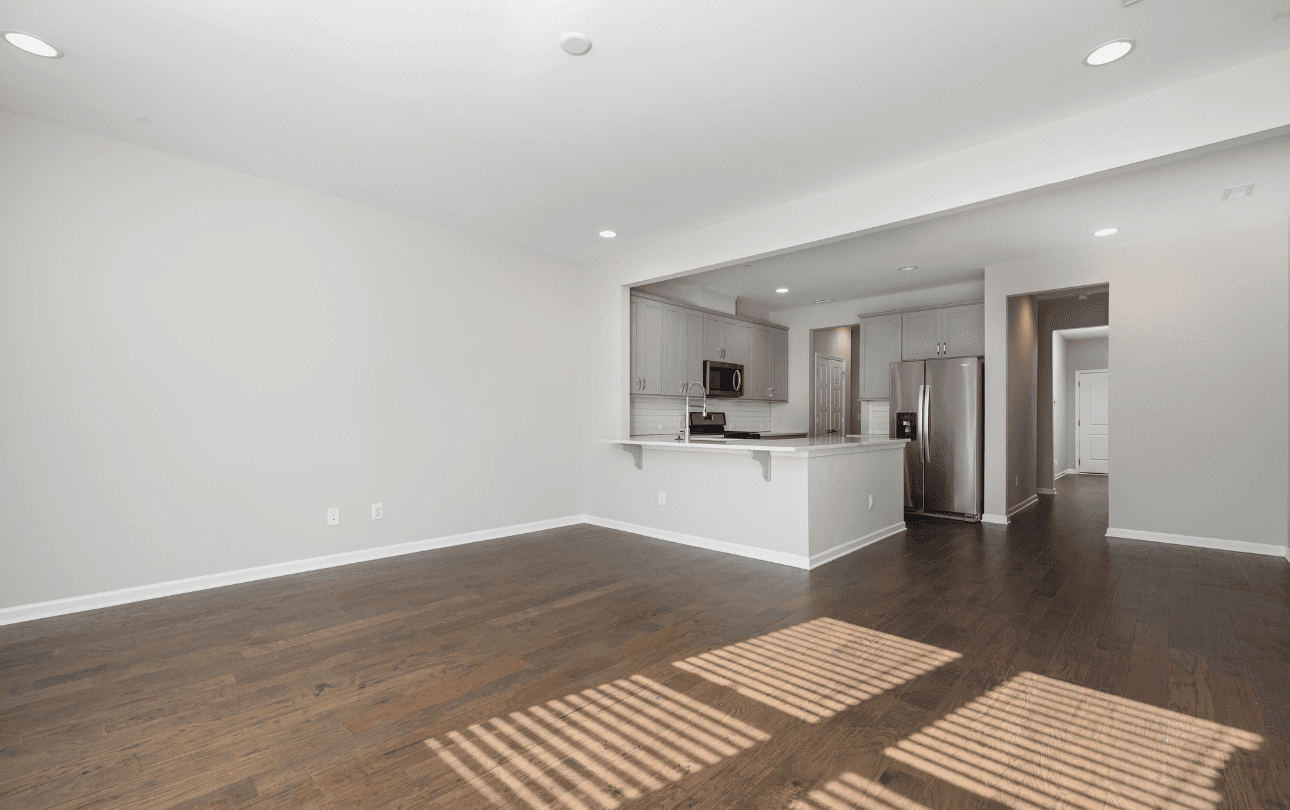Unlocking the doors to occupancy
Filling student housing beds is akin to solving a puzzle. Owners and operators often encounter highly competitive markets, no-shows, skips, and the dilemma of lost time ensuring each signed lease is also guaranteed. Despite these obstacles, the annual objective remains consistent: hitting occupancy goals while ensuring healthy growth of rental rates.
This guide is here to help. We’ve collected advice from industry experts at Inhabitr, College House, and Amber who know how to address these challenges head on. They share real, actionable strategies to help those in student housing reach their occupancy goals and go beyond, creating welcoming and lively places for students to live.
Expert roundtable: Q&A with industry veterans

Ryan Hand, Senior Vice President, Partnerships at Inhabitr
In your experience, which innovative products and services have most led to higher occupancy rates in student housing?
One of the most eye-catching and innovative products I’ve seen attract students to a building y is the implementation of TULU vending. Not only is their product sleek and eye-catching, but the user interface is straightforward and speaks to the student population. The ability to rent a Dyson to clean up after a house party (I mean… study sessions) or go grab an Xbox and a pint of ice cream for an easy night in really provides value to students. You don’t have to leave your community or spend hundreds of dollars to accomplish what you want to do.
What additional strategies and tactics have you seen to be effective?
Personalization of a tour, follow-up, and marketing campaigns make a huge impact on your leasing goals and, thus, occupancy rates. Cookie-cutter tours and follow-ups don’t cut it when your audience has grown up around targeted marketing, retargeting ads, and now AI. Make the first impression special, remember people’s names, follow up thoughtfully, and text when the phone call doesn’t work. Make it fun – this is college, after all.
What single piece of advice would you give to someone venturing into this field?
Learn, listen, and lead. Student housing is still a young industry compared to the rest of multifamily. Find someone who knows the ropes if you want to get into the space. Learn from them and ask questions. See if they will let you shadow them on a task or call. Listen to their advice and observe how they complete assignments and interact with others. Finally, become a leader. Return the favor and let new folks learn from you. Bring your ideas to the table, and don’t stop just because one idea doesn’t make the cut. I am most impressed by those who always bring something to a conversation or meeting. It doesn’t have to be groundbreaking; it just needs to be thoughtful.
What is one particularly memorable moment from your two decades of experience in student housing?
I guess one of my favorite moments was when I was with Aspen Heights. Our new development lease was not on track, so we had to get creative and in front of as many students as possible.
I found out that you could set up a table in a corner of campus once a week for a small fee. We booked every week and tried something new to give away each week. One of those days, I got the idea to rent a cotton candy machine. Surely, it couldn’t be that hard to operate, right? It won’t be messy either, will it? I’m not sure if it was the cotton candy or the perfect timing because all of a sudden, it got crazy busy. Tons of people were approaching us, asking about what we were doing and how they could learn more. After about an hour of making what had to be ‘450,000’ cones of puffed sugar, I was covered from head to toe in sugar fiber and had lost my voice from yelling. The result was a bushel of sticky but relevant prospect cards and a huge leasing week for the property. I was so proud of the team that I took them out to celebrate after an appropriate number of showers to remove what I now call “the devil’s sugar.”
Charlie Matthews, Founder & CEO of College House
What are the prevailing trends shaping the landscape of student housing and what insights can you provide regarding the industry’s future?
The industry is getting smarter. Compared to other sectors of commercial real estate, so many companies in the space have innovated and adapted to change efficiently. Student housing fundamentals have been strong for the last three cycles, and in my opinion, there is still a lot of runway ahead given the lower levels of new supply, enrollment growth at investment-grade universities, strong occupancy, and leasing velocity across the US.
What are the primary concerns for student housing operators as they strategize to optimize occupancy for Fall 2024?
Some markets are experiencing some challenges. All markets are unique, of course, but some trends we are seeing that are of concern are:
Urban markets (Minneapolis, Berkeley, Philly) struggling vs. traditional college towns (Knoxville, West LaFayette, Auburn)
Smaller unit types (studios, 1, 2s) are seeing a slowdown in velocity and rent growth vs. larger unit types (3s,4s,5s,6s)
What advice would you offer to operators looking to stay ahead of the curve and continuously improve occupancy?
Understand your market, your student renter base, and what technologies can mitigate risk.
In your experience, what has been one of the most unexpected aspects about the student housing sector in the past ten years?
It is wild how many people in the space have worked together at various stops on their journeys – once you are in student housing, it’s hard to leave!
David Seymour, Vice President, Global Partnerships at Amber
What are the main challenges student housing operators are encountering in 2024? How many of them have to do with international renters and/or maintaining high occupancy rates?
PBSA properties are not often considered in students' decision-making processes. Given that they are more expensive than other off-campus offerings, many students fail to understand their value.
Currently, many student housing operators are unable to crack the international barriers and tap the correct channels to touch the students at the right point in their decision-making. With growing investments in the PBSA sector, competition is increasing, and it is imperative to have a stable demand channel from different source countries to future-proof business. An overreliance on one channel is always a risk.
The operators that embrace and gain a high market share of international students will have the most robust long-term stability and occupancy opportunities.
How does technology and data play a role in attracting international students?
It plays a considerable role – students gain trust in high-quality technology solutions and systems that give the best personalized content. Customer experience will always win, especially in vanilla markets where brands try to differentiate themselves.
Are there specific demographic groups within the international student population that you believe offer untapped opportunities for student housing owners and operators?
We have seen a high percentage increase in many countries' student migration levels coming to the U.S. Something to keep in mind in the next few years is that international students from China are decreasing by 20%, with India set to overtake with over 320,000 students by 2025.
What stands out the most to you about US student housing operators as your team has been navigating introducing a new product to the market?
Initially, the shutters were down; what stood out most was the "we are doing just fine" approach. This moved quickly to operators being open to learning with us. Being a global company, we have gained experience from many other markets, destinations, and sources; the feedback shows that the operators have valued and embraced our honest, transparent, data-led approach and our ability to integrate into the PMS systems to represent and give the students a great experience. As a tech-focused, student-centric business, it's been great to be met with a real thirst to understand how to become more practical and efficient and thus capture the market share of target international groups.
As we work as a partnership, it's not just about delivering bookings in year one. We are working with operators to develop their international acquisition strategy to help reduce costs and increase ROI long-term.
Looking forward: Navigating the future of student housing together
It's clear that the student housing industry is full of opportunities for growth and improvement. The stories and advice from Ryan, Charlie, and David shed light on the steps we can take to make student housing better for everyone involved. They highlight the importance of improving the living experience for students, using new technologies to benefit owners and operators, and understanding the diverse backgrounds of student residents.
This guide isn't just about how to fill rooms; it's about shaping thriving and supportive student communities. Beyond achieving desired occupancy, creating environments where students feel more at home while operators streamline their operations and minimize bad debt is what it’s all about. By focusing on building diverse communities and ensuring students have access to the living spaces they deserve, you’ll set the stage for success.
To learn how TheGuarantors’ smarter rental income coverage can help you welcome more students with less risk, visit theguarantors.com/student or email micah.hollingsworth@theguarantors.com.



